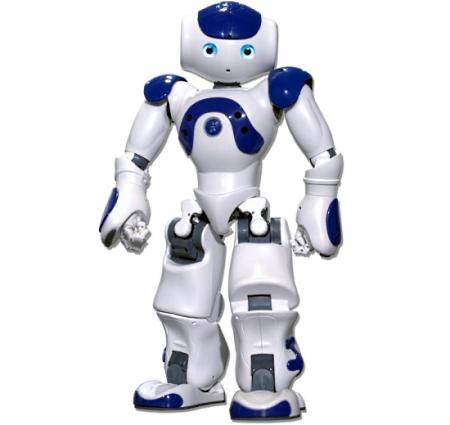Scientists have created an "emotional" robot

In general, about the robot Nao has long been known - every year there are news that the robots of this model are involved in a football match, they are somehow different. This time, the researchers modernized Nao in such a way that he began to “understand” and even “show” emotions. In general, the process of upgrading the robot turned out to be so complicated that in fact, the project participants created a new device that only looks like the old Nao. Interestingly, one of the main goals of creating an emotional robot is to help children who suffer from autism.
So, the researchers completely succeeded in the task, and now Nao freely perceives a certain number of emotions, plus is able to “manifest” them. It is worth noting that the algorithm of the behavior of the robot is quite complicated (in fact, it is very complex), and the model is based on the behavior of children about one year old. Scientists believe that constant “communication” with such a robot will help children with autism develop their own communication and emotional skills.
')
In addition to the model of interaction between children and the surrounding world, the scientists also introduced a sophisticated behavior algorithm for the Aibo robot dog, which was produced in 2006–2007 by Sony. This algorithm was finalized and supplemented, after which it became part of the “personality” of Aibo.
The creators of the emotional robot believe that it can be used not only to educate autistic children, but also in a number of other projects, gradually complicating the model of robot behavior. Interestingly, already now Nao can reproduce such emotions as fear, pride, joy, admiration for something, he can also be sad. In general, as mentioned above, this robot "behaves" like a 1-2 year old child. By the way, the robot recognizes individuals and can then recognize them when they meet. Due to this, Nao behaves with each person with whom he communicated, in different ways.
Already, the robot is working in one of the health centers in the United States, carrying out the program laid down by scientists. Children with whom he communicates, the robot really like. According to experts, it is much easier for autists to communicate with the robot (autistic children are meant) than with ordinary people, both adults and children. The fact is that the behavior of the robot, as you can guess, is much simpler than the behavior of an ordinary person, so autistic children can understand what the robot is experiencing at the moment.
An interesting project, which is to say - the main thing is that it really helps children. Robots little by little become a part of our life. It is a pity, while only American children can enjoy communicating with Nao. Honestly, I would talk to this cute robot myself.
Source: https://habr.com/ru/post/101898/
All Articles